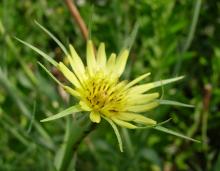Wildflowers, Grasses and Other Nonwoody Plants
Media

Species Types
Scientific Name
Verbascum thapsus
Description
Mullein immigrated to America along with Europeans, and with them it has spread across the continent. Its fuzzy, green-gray rosettes of leaves and tall spikes of yellow flowers make it easy to identify.
Media

Species Types
Scientific Name
Verbascum blattaria
Description
Moth mullein is a native of Eurasia introduced to our continent in the early 1800s. Since then, it has spread across North America. It’s named because the fuzzy flower, with 2 antennalike stamens, looks something like a moth.
Media

Species Types
Scientific Name
Ranunculus hispidus
Description
Hispid buttercup is a densely hairy plant with showy yellow flowers. It is found mostly in the southern half of Missouri, usually in moist locations.
Media

Species Types
Scientific Name
Potentilla simplex
Description
Common cinquefoil, or five-finger, is named for its leaves, which are divided into five fingerlike leaflets. One of seven cinquefoils in Missouri, it blooms from April to June and is scattered nearly statewide.
Media

Species Types
Scientific Name
Ranunculus harveyi
Description
A slender little buttercup growing in rocky, dry areas with acidic soils, Harvey’s buttercup occurs mostly in southern Missouri. One key to identify it is to examine the basal and stem leaves, which are quite different.
Media

Species Types
Scientific Name
Pedicularis canadensis
Description
Wood betony has a tight spiral of tubular, hooded yellow flowers atop a plant adorned with deeply incised, fernlike leaves that are about as attractive as the flowers themselves. In early spring, these leaves have a beautiful wine-red coloration.
Media

Species Types
Scientific Name
Euphorbia esula
Description
When you consider the negative effects this plant has on natural habitats, and how hard it is to control or eradicate, you almost want to rename it “leafy scourge”! This invasive plant is spreading in our state. Learn how to identify it.
Media

Species Types
Scientific Name
Pyrrhopappus carolinianus
Description
One of several native plants called dandelions, Carolina false dandelion is an annual with sulphur yellow flowers and puffy seedheads.
Media

Species Types
Scientific Name
Krigia biflora
Description
There are several members of the aster family that look something like common dandelions. But unlike the familiar lawn weed, two-flowered Cynthia is a native Missouri wildflower.
Media

Species Types
Scientific Name
Tragopogon dubius
Description
With its yellow composite flowers and round seedheads of fluffy “parachutes,” goat’s beard looks like a gigantic dandelion. A native of Europe, many people view it as an invasive weed.
See Also
About Wildflowers, Grasses and Other Nonwoody Plants in Missouri
A very simple way of thinking about the green world is to divide the vascular plants into two groups: woody and nonwoody (or herbaceous). But this is an artificial division; many plant families include some species that are woody and some that are not. The diversity of nonwoody vascular plants is staggering! Think of all the ferns, grasses, sedges, lilies, peas, sunflowers, nightshades, milkweeds, mustards, mints, and mallows — weeds and wildflowers — and many more!





















